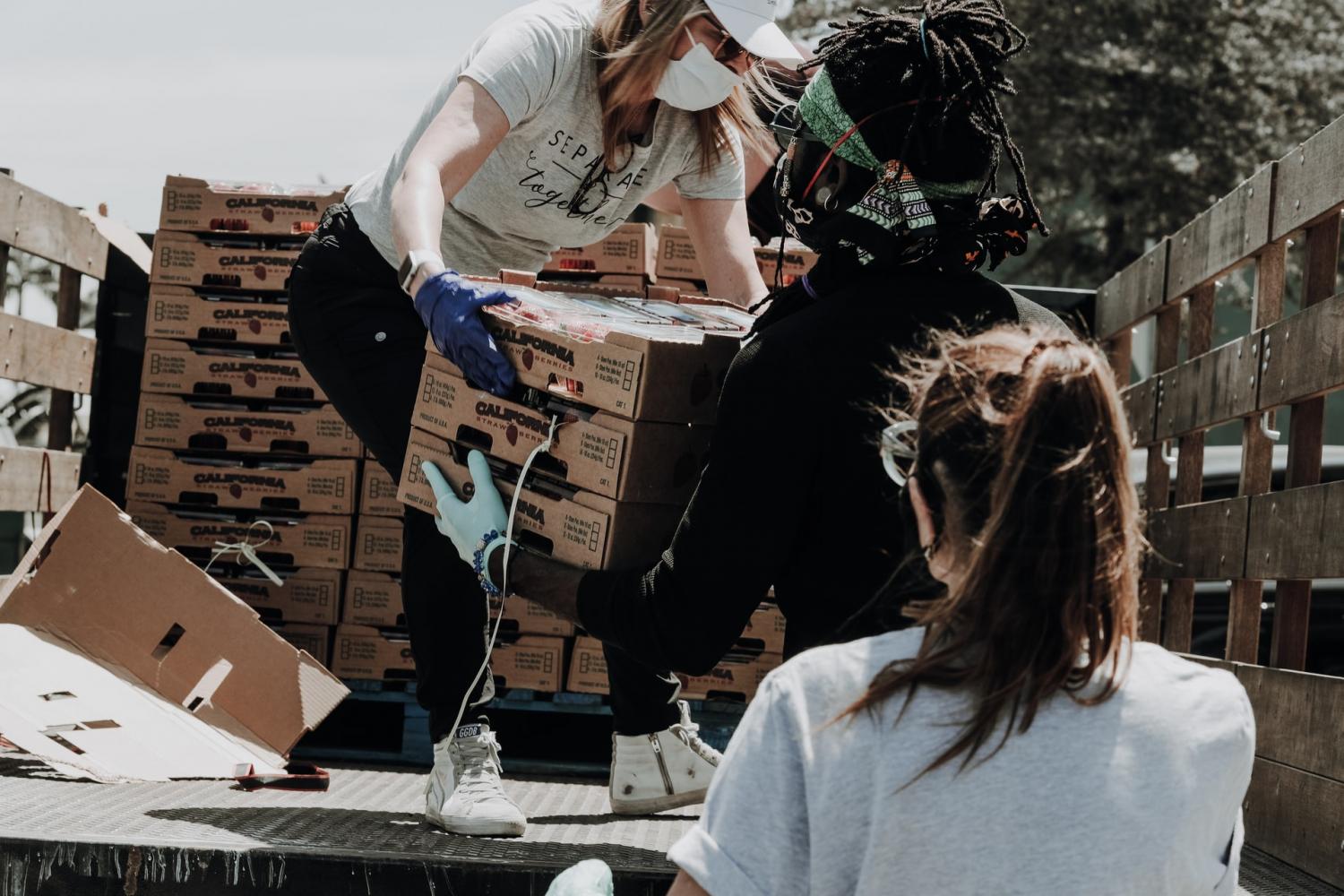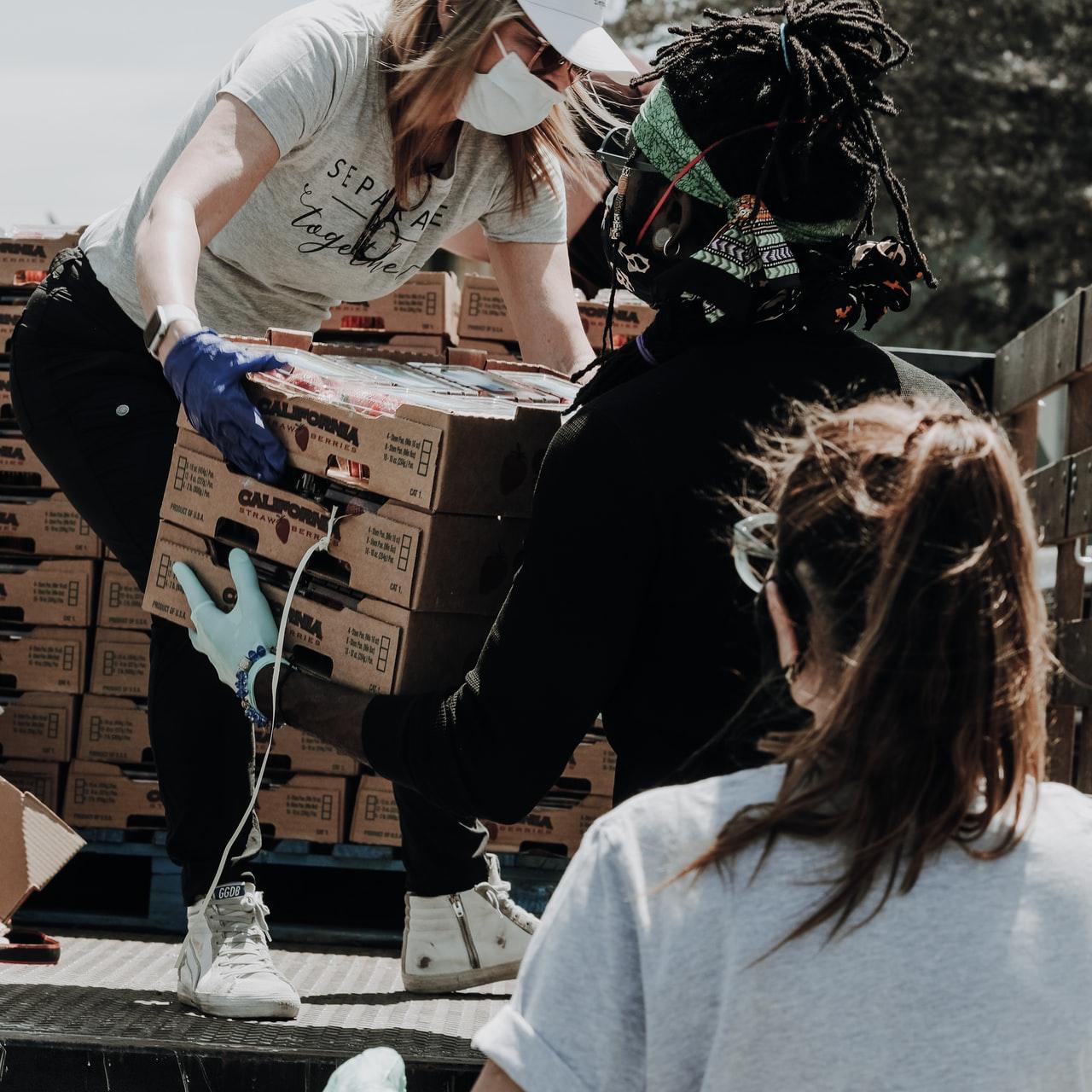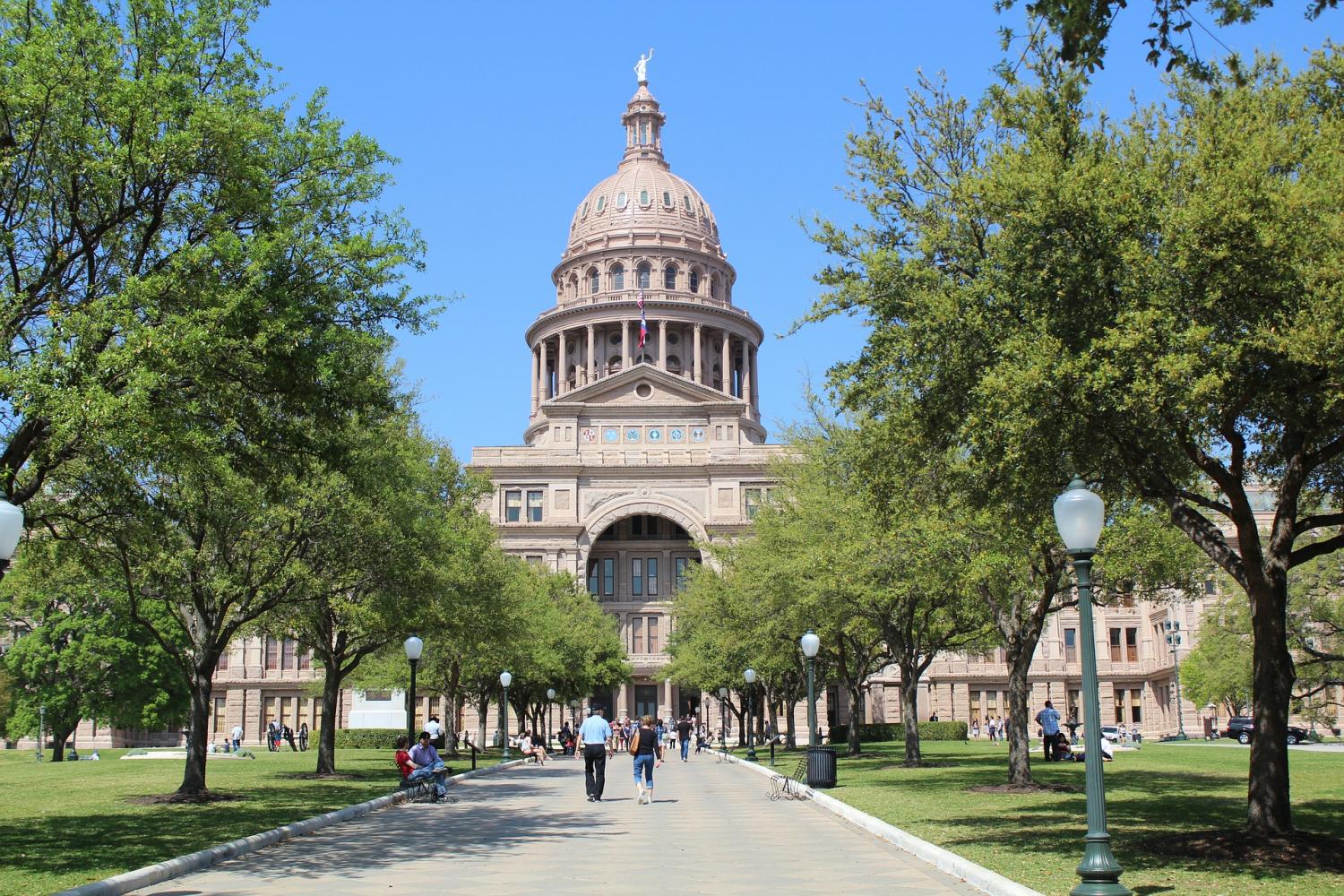How COVID-19 Sparked Renewed Interest in Sustainability


Almost a year ago, the first COVID-19 stay-at-home orders were issued, forcing a pause and a recalibration in practically all of our daily rhythms and routines. This massive shift also brought many long-simmering issues to the forefront: race, injustice, inequality, and the intersections of these systemic problems. Another issue that caught national attention over the last year was renewed climate and sustainability commitments from brands and businesses.
But why? What prompted this accelerated push for corporate commitments to climate issues and sustainability during an international health crisis? Dr. Gayle Schueller, 3M’s chief sustainability officer, weighed in.
“These types of corporate commitments have been accelerating for quite a while because climate change and other sustainability factors meaningfully impact people’s lives and, ultimately, businesses around the world,” Schueller said. “As a result of the pandemic, people are becoming more grounded in what’s important to them as individuals. This includes taking a closer look at what’s really happening in our environment.”
As many watched the world from their windows and worked with colleagues in Zoom meetings during the early months of the global COVID-19 shutdown, reports of dramatic air quality improvements began surfacing. Connecting the dots between a sudden, near-global pause in commuting and travel wasn’t remarkably difficult. “There was a swift, positive impact on air quality, which in turn had a significant, positive impact on human health,” Schueller said. “It has been a wakeup call for individuals, as well as corporations, to do more in terms of protecting the health of our planet and its people.”
In 3M’s annual State of Science Index (SOSI), two-thirds of the respondents indicated that adverse environmental impacts are the second most alarming consequence of a world without science. Only “a higher risk of health issues” ranked higher.
However, this confluence of crises means that science has rarely been far from the world’s collective consciousness over the past year. The COVID-19 crisis has helped to renew interest and desire for answers, access, and actionable steps, too. “Science has always been at the forefront of making changes for the better,” Schueller said. “I’m not alone in thinking science can help us solve the world’s sustainability challenges.”
But with the distribution of three different vaccines underway and an end on the horizon, does a national return to “normal life” mean a return to business as usual for these companies without as much scrutiny placed on sustainability goals?
Schueller’s answer was no: In fact, she sees the commitments accelerating as the advancements in sustainability technology keep coming. “What’s exciting about this moment in time is that there is an increased awareness and momentum to make a difference,” she explained. “This gives us more opportunities to collaborate with others to make an even bigger impact. We’re able to work with governments, NGOs, and other corporations to drive real change in the sustainability space.”
To that end, 3M has established its Sustainability Value Commitment (SVC), which mandates that every product entering the product commercialization process must demonstrate how it drives impact for the greater good.
“Consumers and customers are driving meaningful change by increasing their focus and speaking out on the sustainability and ESG [environmental, social and governance] strategies put forward by corporations,” Schueller said. From her point of view, the open dialog between businesses and customers, with companies understanding their customers’ priorities and goals and then collaborating with them to implement changes, is vital. “If we can all help our customers find ways to achieve their goals for a sustainable future, we all win.”
Image credit: Anastasiia Chepinska/Unsplash
Rubber Industry Platform Aims to Halt Deforestation, Protect Human Rights


Palm oil, cocoa, soy, bananas … and rubber? Despite a lower profile, natural rubber is a widely traded tropical global commodity. Approximately 13.8 million tons of natural rubber was produced in 2019, with Indonesia, Malaysia and Thailand being the top producers. But until recently, there was little to suggest that collective and focused efforts from the different stakeholders across the natural rubber supply chain were in place to ensure that supply chain was being managed ethically and sustainably.
That changed in March 2019 with the official launch of the Global Platform for Sustainable Natural Rubber (GPSNR), spearheaded by the Tire Industry Project, a CEO-led sustainability forum for the tire industry under the umbrella of the World Business Council for Sustainable Development (WBCSD). The GPSNR brings tire manufacturers, other major rubber buyers and processors, car makers, international NGOs and smallholders together under an ambitious set of priorities to ensure the sustainable production and supply of natural rubber.
Members already account for a large percentage of purchased natural rubber. “We have more than around 50 percent of the global demand of natural rubber within the membership of GPSNR,” Director Stefano Savi told TriplePundit. “This is potentially a huge game-changer.”
GPSNR asks members to commit to 12 principles, which include important, direct-impact goals such as forest sustainability, water management, anti-corruption, land use, labor and human rights, along with crucial process-oriented principles such as traceability, transparent reporting, auditing protocols, and training and education.
Natural rubber versus synthetic rubber
World War II brought disruptions to the global natural rubber supply chain. This spurred the United States government to develop synthetic rubber as a viable, mass-produced alternative. However, synthetic rubber requires carbon-based petroleum byproducts for its production.
With the modern focus on alternatives to carbon-based products, natural rubber continues to be a critical commodity for many industries, particularly tires. Beyond potential climate impacts, synthetic rubber cannot entirely replace natural rubber in all tire applications, meaning natural rubber will always be necessary for the industry. “There is no substitute for the quality and characteristics of natural rubber in making safe, durable, and reliable tires — whether it’s for tires on a car or a plane,” Andy Thompson, global director of sustainability strategy, policy and integration at Bridgestone Corp., a member of GPSNR, told TriplePundit.
As such, demand for natural rubber is expected to rise as global automobile production increases. Unfortunately, as readers of TriplePundit know all too well, natural or plant-based doesn’t always mean ethical and sustainable. “We need to ensure that essential components in products are sustainable in all senses of the word,” Thompson added. “GPSNR is working to improve and align the performance of members of the value chain through implementation of a common set of principles.”
As natural rubber demand grows, the goal is to remove sustainability issues that may currently exist in the natural rubber industry and have been well documented in other industries in order to mitigate the risk of those issues in the future. Take, for example, palm oil biofuels. Once considered an environmentally friendly substitute for petroleum, it turns out that once you factor in greenhouse gas emissions from land-use change, peatland degradation and processing, palm oil biofuels actually have three times more carbon emissions than the fossil diesel they were meant to replace.
Savi knows palm oil well, having worked for the Roundtable on Sustainable Palm Oil (RSPO) prior to joining GPSNR. And while this experience has been valuable, he also knows you can’t just take what worked for palm oil and bring it to natural rubber.
“You cannot apply the same strategy to different supply chains,” he explained. “Every supply chain is unique.”
Managing the natural rubber supply chain
For example, unlike other tropical commodities, which have many buyers, natural rubber is primarily used by a single industry — tire manufacturers. The global tire industry buys 70 percent of all natural rubber used today, meaning it has a clear role in ensuring this raw material is cultivated in a way that respects communities, the environment, and long-term viability of natural rubber production.
“Tire makers are very conscious about sustainability, and they're very willing to move,” Savi said. “Companies that are more transparent, that are operating more sustainably, are better able to attract funding, because financing is more and more linked to sustainability credentials.”
At the same time, most natural rubber producers are smallholders, an estimated 7 million to 8 million in total — a stark contrast from palm oil or bananas, which are grown primarily on large plantations. Using a certification model like the RSPO would be time-consuming and difficult to manage.
“Eighty-five percent of natural rubber is produced by independent smallholders,” Savi told us. “So you have a supply base that is very wide and very complicated.”
To make oversight work for natural rubber, the GPSNR will need to create an entirely new approach — and it’s already well on the way.
At its virtual General Assembly in September, GPSNR members approved a policy framework for sustainable natural rubber production and sourcing, which comprises eight core commitments around legal compliance, ecosystems, human rights, supply chain traceability, monitoring and reporting, as well as processes to implement these commitments. Additionally, the policy framework aligns with GPSNR’s 12 overarching principles. Member companies are expected to integrate these commitments into their purchasing policies and other corporate documents.
“This policy covers different aspects of sustainability — economic, environmental and social — like requirements for no deforestation and no expansion onto peat, for example,” Savi explained.
The General Assembly also created a dedicated membership category for smallholder producers, which gives them an equal role in decision-making within the GPSNR. Twenty-eight smallholder members from seven rubber-producing countries joined the GPSNR in 2020.
“We are combining a multitude of perspectives in finding common solutions,” said Thompson of Bridgestone. “Having a common set of principles is important to create sustainable solutions that are predictable, consistent and long-lasting.”
For now, GPSNR is ahead of the curve — and if it’s successful, it could help prove that sustainable supply chains can be designed proactively.
This article series is sponsored by the Tire Industry Project and produced by the TriplePundit editorial team. Members of the Tire Industry Project (in alphabetical order) are Bridgestone, Continental, Cooper Tire, Goodyear, Hankook, Kumho Tire, Michelin, Pirelli, Sumitomo Rubber, Toyo Tires, and Yokohama Rubber.
Image credit: Flickr/Mike Fernwood
The Business Case for Vaccine Equity


Photo: Health officials distribute the Moderna COVID-19 vaccine to front line health workers and first responders in Baltimore County, Maryland during December 2020. Since the beginning of such efforts nationwide, vaccine equity has emerged as a leading concern as critics say mass vaccination sites are inaccessible to America's more vulnerable communities.
No one should be surprised that America’s COVID-19 vaccine rollout system has produced sharp racial disparities in vaccination rates – the system has played upon existing inequalities from digital access, to quality of employment, to transportation access. Indeed, I would have flunked any of my graduate students had they failed to anticipate what was soon to occur. The positive news is that together with the business community, we can achieve vaccine equity in a way that gets us back on our feet for good.
Consider that in nearly all states, the first group to become eligible for shots after health care workers and those in nursing homes were those above the age of 65 – a group that is generally far more white than the younger Black and Latino workers who do the essential tasks which put them at risk. There is a rationale here – older individuals may be less exposed but they do face a higher probability of death from COVID-19. But let’s be honest: this is a system that is racially disparate in its impact if not its intention.
Also consider the main way you sign up for a dose of these life-saving vaccines. If you’re in the right occupational or age category, it’s equally open to all – provided you have a computer, high-speed internet, the technological sophistication to add an automatic refresher to your preferred browser, a job or a cushy retirement where it’s easy to check your display constantly, flexible employment that allows you to dash away when an appointment opens, and a car to either get to or drive through one of the mega pods.
By contrast, designing with vaccine equity (and not equality) in mind would have prioritized communities ravaged by COVID where workers are low-paid, lack access to insurance and housing is overcrowded. It would have rushed resources to those communities, paying less attention to high-profile stadium mega-sites and more attention to local neighborhoods. And it would have set standards of accountability that looked not just at delivering doses but also closing pre existing racial gaps.
Fortunately, a shift toward vaccine equity is beginning to emerge. In California, for example, the state has decided that it will temporarily set aside 40 percent of available vaccines for residents in areas facing the biggest economic and health challenges according to a metric called the California Healthy Places Index. The state has likewise been distributing more vaccines through community clinics and mobile pop-ups in poorer neighborhoods. Meanwhile, some employers have jumped in, particularly in agriculture, to provide shots to essential workers.
This is good for the workers and communities, of course, but vaccine equity is also good for business: You can’t sustain production when your employees fall ill or shy away from work because they fear that disease will follow them home to their beloved families.
Indeed, this is yet another instance in which the usual admonition of traditional economics – that equity must be bad for the economy – is, to use a particularly apt expression, dead wrong. Prioritizing those who are least advantaged and most affected by COVID will more quickly reduce the overall burden of disease. And this is not a one-off: Research has increasingly shown that both countries and metropolitan areas that are more equitable and, in the U.S. context, less racially segregated, are better able to sustain employment and business growth.
So what can the business community do that reflects this lesson of vaccine equity, and that doing good and doing well can go hand-in-hand?
First, become a strong advocate for vaccine equity in the U.S., pressuring state and local authorities to address disparities; if business adds its voice to the community, it will make a big difference in the politics. Second, take independent action by opening up employment sites for mobile clinics and mass vaccinations, particularly of essential workers. Third, advocate for international vaccine equity, recognizing that the global economy could lose over $9 trillion dollars -- 40 percent of it in advanced economies – unless developing countries can reboot their economies and their import demand.
But most important, carry the lessons of this COVID-19 era forward. We now know that our economy is only as viable as our public health system – but we have created a health system that leaves too many with inadequate access to care. We now know that our economy and markets are only as strong as the contributions made by essential workers – but we too often offer them low pay and little respect. We now know that when a crisis hits, the spirit of mutuality will get us through – but we have organized large parts of our economy as every person for themselves.
Vaccine equity is needed now but designing for racial and social equity and business-community collaboration must become part of the re-imagination and restructuring that can guide our long-term recovery.
Image credit: Baltimore County Government/WikiCommons
7 Ways Corporate Responsibility Leaders Will Take Action in 2021: Findings from 50 Interviews


We recently interviewed 50 corporate responsibility leaders – as well as 20 stakeholders, including partners, investors and board members – to identify trends that will have an impact on these professionals in 2021. Our findings are published in the new report: “Can Capitalism Lead a More Sustainable and Equitable Recovery?”
In yesterday’s article, we shared five insights that are shaping the corporate responsibility profession. Now, we highlight the seven most impactful strategies leaders are making in 2021 to make businesses more responsible.
Be active at the board level
According to Tensie Whelan, Director of NYU Stern’s Center for Sustainable Business, “Boards are obstructing ESG – at their own peril. PWC’s 2020 Annual Corporate Directors Survey found only 38 percent of board members think ESG [environmental, social and governance] issues have a financial impact on a company. A main part of the problem is boards lack ESG expertise, according to a new study.”
Corporate responsibility leaders say they are working hard to build the business case to executives. Through their efforts, board members, can understand the importance of positioning corporate responsibility as essential for new markets, building goodwill with regulators, generating consumer trust, and boosting employee recruitment efforts. These same leaders say they are are also pushing for more ESG training such as Competent Board certification.
Build longer-term plans for your corporate responsibility strategy
As one corporate responsibility leader of an international company shared, “We must start by asking... ‘what will [corporate responsibility] look like in 5 years?’ Our new CEO has a vision for a ‘purpose-driven organization,’ and corporate responsibility is essential to showing our company contributes to the greater good.”
Less than 1 percent of publicly traded companies have a “chief sustainability officer” or equivalent. While corporate responsibility leaders say they are busier than ever, they also reminded us that it is time to evangelize for the SDGs [Sustainable Development Goals], setting audacious targets, and showing that this movement is, according to former Unilever CEO Paul Polman, “the biggest business opportunity of all time.”
Be a strategic partner, not a pest
Some corporate responsibility leaders reported senior managers from HR, operations, innovation and other departments are approaching to help solve business problems. As a result, they are also gaining more human and financial resources to sustainability and corporate responsibility teams.
One leader said, “the typical [corporate responsibility] role used to be to go around and pester people to volunteer and donate during particular days of services of specifically themed months. This is outdated. Days of service and giving campaigns are undemocratic and they entrench power dynamics, while releasing companies of their real responsibilities to all stakeholders.” Leaders said growing their functions and aligning more resources were not seen as pests, but actually as levers company wide.
Engage executives and turn them into heroes
Successful professionals in this space have executive support: financial, cultural and promotional. Some are discreet: Leaders with an active stance who fail to achieve earnings are more likely to be fired. Nevertheless, CEOs, including Tim Cook from Apple, Pamela Maynard from Avanade, and Kevin Johnson from Starbucks are tying growth goals and compensation to targets.
Most successful corporate responsibility leaders describe themselves as lobbying executives, convincing them to increase investments, rewarding them with more press and brand opportunities. As a recent McKinsey report revealed, this trend is evident in the fact that 181 U.S. CEOs have signed a statement committing themselves to a new understanding of companies’ role within society.
The bottom line is that investing in employees, supporting communities and dealing ethically with suppliers are all crucial, in addition to securing shareholder value. Looking at the triple bottom line – people, planet and profit - is now mainstream, as well as socially responsible investment or ESG funds.
Invest in self-care
Times are uncertain, and many corporate responsibility budgets are at risk: Expectations have never been higher. Leaders with whom we spoke felt tired and isolated, yet understood it was their time to inspire change and were working harder than ever. Sustaining pressure is only possible with self-care, with investments made professionally and personally.
The takeaway here is to create communities of support with fellow leaders while making time to reinvigorate and protect yourself from burnout.
Embrace social enterprise
MovingWorlds Institute defines a social enterprise as “An organization that utilizes business principles and highly ethical internal and equitable operations to solve social and environmental challenges through creation of sustainable revenue streams – while managing their own externalities and also influencing larger systems around it.”
Corporate leaders indicate that they are increasingly looking to partner with social enterprises to achieve sustainability and equity targets.
For example, SAP says it is committing 5 percent of its spending with social enterprises by 2025. The rapid rise of “Buy Social” and “Benefit Corporations” – organizations that certify social enterprises – are further proof of this sector’s growth.
As one strategy executive shared with us, “Companies are making bigger commitments on sustainability, equity, justice, and other social factors... Most don’t know how to achieve this… they will need to partner with a new type of enterprise, the social enterprise, which prioritizes and measures – sustainability, equity, and justice factors alongside profit. When these businesses with a social focus are integrated into supply and distribution chains, only then can corporations reach their increasingly audacious sustainability and equity commitments.”
Scale by educating and engaging employees
Regarding success, nearly 100 percent of interviewees shared that if they did their job well, corporate responsibility and sustainability would be integrated into all aspects of the business: Not just programmatically, but also with measurement, shared resources, strategic partnerships, and most importantly, an educated and active employee base.
As we have seen in our platform focused on sustainable growth of revenues for international development (S-GRID) with partners like SAP, when employees are educated on social responsibility, they in turn make many small decisions that can create more sustainable companies, including shifting spending to responsible suppliers, building more inclusive technologies, coding inequality and discrimination out of artificial intelligence and designing carbon-neutral products.
The future: integrating corporate responsibility into business
According to Bill Gates, “As awful as this pandemic is, climate change could be worse.” Further, the World Economic Forum’s recent global risks report has suggested that the top five economic threats were environmental, as climate-change risks have become more real as they took a backseat to the more visible COVID pandemic.
Yet companies, like BlackRock, Microsoft and Amazon, have pledged to address climate change risks. These actions confirm that growth in corporate responsibility investments that started during the pandemic and ongoing calls for social justice during 2020, must continue and expand to do more. Corporate responsibility leaders will continue to be elevated to guide and lead these discussions – and by staying focused on these approaches, they will be able to increase their role’s prominence and potency across all companies.
This is part two of a two-part feature. In case you missed it, you can find part one here.
Image credit: Philipp Birmes/Pexels
People Used to Laugh at These Three Clean Technologies


Photo: this bottle of vodka derived from carbon dioxide, distilled and sold by Air Company, is one example of emerging clean technologies that could scale up over the next few years.
Not too long ago, household solar panels were the provenance of scruffy off-gridders. Wind turbines were similarly laughed out of the mainstream. Now wind and solar power are playing a crucial role in global decarbonization. With that in mind, here are three additional clean technologies that will help prevent catastrophic climate change.
New membranes for green hydrogen and fuel cells
Not too long ago, many people laughed at hydrogen fuel call cars. Some are still laughing, but in the meantime hydrogen fuel cells are gaining a serious foothold in practically every other form of transportation. That includes long-haul trucks, aircraft, locomotives and ships.
The passenger car problem is twofold, and it is very similar to the issues once faced by all-electric vehicles. One is the high cost of the fuel cell, and the other is the availability of fueling stations.
However, the picture is beginning to look a little brighter for fans of fuel cell cars. Somewhat ironically, that is partly thanks to Royal Dutch Shell.
Shell has been collaborating with the U.S. Department of Energy’s National Renewable Energy Laboratory on a clean technologies accelerator called GCxN, and together they recently announced a new cohort of three startups.
One of those startups is the firm Versogen (formerly W7 Energy). Versogen specializes in membranes, which are a pivotal element in both fuel cells and electrolyzers.
Versogen has come up with a new membrane formula that will help reduce production costs for fuel cells. It will also lead to lower costs for electrolysis devices, which deploy electricity to “split” hydrogen gas - aka green hydrogen - from water.
Another member of the new cohort also aims at reducing the cost of membranes. The Canadian firm Ionomr Innovations has come up with a membrane formula that lowers costs while avoiding toxic materials. As with the Brooklyn-based firm Air Company, the Ionomr membranes could be used for electrolysis and applications such as hydrogen fuel cells.
There’s also a brighter future ahead for fuel cell passenger cars.
As for the prospects for growth in the fuel cell passenger car market, the electrolysis angle circles back around to the issue of fuel station availability. Here in the U.S., hydrogen fuel stations for individual passenger cars are practically nonexistent. The picture is flipping, though, with the advent of low-cost renewable energy along with lower costs for fuel cell technology.
Wind and solar power dovetail with the trend toward grid decentralization and distributed energy resources. That opens the door to establishing more hydrogen fuel stations, including in remote, off-grid locations.
As green hydrogen becomes less expensive, and more available, it could become the rising tide that lifts all fuel cells, including fuel cell passenger cars.
Capturing carbon from the air, one of the newer clean technologies
Capturing carbon from ambient air is another one of those clean technologies that used to elicit smirks. However, the field is beginning to accelerate as new developments lead to additional pathways for monetization.
Shell also has a hand in the carbon capture field, through the GCxN accelerator. A second member of the newly announced GCxN cohort is Air Company.
Air Company’s business model is based on using captured carbon to produce alcohols for use in high value products including fragrances, sanitizers and even spirits. The firm is also looking into producing fuels from captured carbon.
Renewable energy is a key factor in the process, as it is with electrolysis.
“Our technology uses only air, water, and sunlight as inputs. It starts by using captured carbon dioxide from absorption-based air capture technology and generating electricity from sunlight using solar energy to power our conversion system,” Air Company explains.
In support of the pollution-to-product field, the Energy Department has also just released a new $24 million round of funding for what it calls “transformational air pollution capture.”
The funds are aimed at clean technologies that replicate the natural process of carbon absorption by plants and trees.
“While progress has been made in this field, direct air capture methods are not currently efficient enough to be cost-effective and economically viable. This funding will support the breakthroughs needed to address the limitations of currently available technologies, and develop entirely new and more effective approaches for direct removal of CO2 from ambient air,” the Energy Department says.
To be clear, ambient air carbon capture and sequestration is not a substitute for meaningful action on climate change. While Shell and some other fossil stakeholders seem serious about transitioning their business out of fossil extraction, ExxonMobil and other producers appear more interested in deploying carbon capture and sequestration as an offset that enables them to continue along an unsustainable pathway.
Beaming solar energy from space
Beaming solar energy from space is another technology that appeared confined to science fiction, until recently.
Commercial application may still be off in the future, but in the meantime the U.S. Department of Defense is pushing the technology as a means of providing a reliable, 24/7 supply of clean energy to practically any location on Earth.
The basic idea is to deploy solar panels in space to capture solar energy and beam it down to Earth in the form of radio frequency microwaves.
The Naval Research Laboratory already has a solar panel satellite in test mode, through its PRAM (Photovoltaic Radio-frequency Antenna Module) program.
The Air Force is also on the case, through its SSPIDER (Space Solar Power Incremental Demonstrations and Research) project in partnership with Northrup Grumman.
“Space solar power beaming is not a new concept; yet until recently, the technology did not have a clear path forward,” the lab explains. “In conjunction with primary industry partner Northrop Grumman, AFRL established the SSPIDR project to mature technology critical to building an operational solar power transmission system for providing reliable and logistically agile power to expeditionary forces.”
“Energy is a strategic enabler and potential vulnerability for our nation and our Department of Defense,” adds U.S. Air Force Col. Eric Felt, who leads the lab’s Space Vehicles Directorate.
Defense and space technology have been the proving grounds for the Internet and solar panels, two technological developments now in widespread use today. If and when space beam systems become commonplace, add it to the list of clean technologies that will become powerful new elements in the emerging green hydrogen economy.
Image credit: Air Company
We Interviewed 50 Corporate Responsibility Leaders with Big Plans for 2021: Here’s What We Learned


Corporate responsibility leaders will have an increasingly prominent seat at the decision-making table in 2021, so we interviewed 50 such leaders – and 20 other stakeholders, including partners, investors, Board members and more – to identify what trends are changing their roles in 2021. We published findings in our new report: “Can Capitalism Lead a More Sustainable and Equitable Recovery?”
In this article, we share the top five insights from our research. In a follow up to be published tomorrow, we will share the seven most common investments corporate responsibility leaders will make this year.
Corporate responsibility should help companies change from the inside out
A corporate social responsibility (CSR) leader of a global technology company recently shared with us that, “CSR leaders need to pat themselves on the back for encouraging the growth of this role, but now we need to work even harder to take advantage of the opportunity for the CSR profession that has risen on account of the crises of 2020.”
CSR is not only about volunteering, community grants or raising money. It is about making your company more responsible at its core. B-Lab provides a great framework for responsible business practices by focussing on these five areas:
Governance: Ensuring that a company’s legal policies account for sustainability, equity, and a higher purpose – such as adding ESG (environmental, social and governance) metrics to board-level accountability.
Workers: Taking care of employees, including a living wage, healthcare, equity, tackling discrimination, and more – investing in more strategic community-building initiatives in all sites where employees are based.
Community: Fostering community involvement and partnership, moving beyond donations and sporadic volunteering to meaningful partnerships – and investing in more strategic community-building initiatives in all sites where employees are based.
Environment: Accounting for all emissions and environmental degradation and working towards net-zero carbon and water – including adding public reporting to consumers and investors.
Customers: Ensuring products and services actually make a meaningful and positive impact on people and other stakeholders, which adds more layers of transparency in everything that is in the product.
Companies are missing out on the “biggest business opportunity” of our time and exposing themselves to notable risk by not integrating sustainability and equity into their core strategy.
Employee demand for corporate responsibility and sustainability is up
Employees want to give more, volunteer more, and expect their companies to stand up for ethical and moral issues, which includes getting involved in politics. One CSR leader of a high-growth tech company said, “Like many companies, we have gone virtual and this has proven to be a great move. That said, we are very concerned about how we can build a strong corporate culture with limited face-to-face interaction. Engaging employees in social impact activities is a key part of both how we want to share our purpose and is also a very important recruiting tool.”
Many executives are still confused about the role of corporate responsibility
Executives still view the notion of corporate responsibility as philanthropy. This “winners take all mindset” pigeon holes CSR leaders in a nearly impossible position of trying to get their company to be more responsible. Only a couple of executives, such as at brands like Starbucks and Apple, have their compensation connected to ESG targets. One CSR leader of an international direct-to-consumer marketplace shared, “We are trying to engage in meaningful conversations with our leadership about changes to our core business and operations to create less harm and include social enterprises, but the short-term ‘profit maximization’ mantra blocks us again and again and again...”
Boards are blocking progress
Indeed, less than 10 percent of publicly traded companies have a board committee responsible for monitoring and achieving ESG targets. One board member in the research said, “There is a growing movement around the purpose of companies that is certainly noteworthy and many of the biggest corporate executives are thinking about this. But companies are legal entities that were incorporated for a reason, and leaders need to be careful about what they stand up for. Employee populations are increasingly diverse – racially, geographically, and politically – and corporations cannot be the moral consciousness of employees. It is an important question, but it needs to be considered carefully and with consideration of long-term implications.”
Another board member said that taking a position on ESG will only harm her own reputation in a male-dominated environment, and that “Our board will not take action until there is an SEC reporting requirement.”
Expectations from partners, governments, and communities are increasing for CSR
According to Edelman’s Trust Barometer, corporations are more trusted than nonprofits and governments. As a result, consumers and partners expect companies to be more transparent, give more to their communities, and better partner with governments and the social sector.
As one leader from a global development bank shared, “We will see more government spending, which is typically massive in size, require vendors and suppliers – and therefore their subcontractors – to report on important factors like environmental impact, gender equality, and inclusion.”
Tim Mohin, former CEO of the Global Reporting Initiative, further reinforced this point, saying, “Policymakers are increasingly requiring ESG disclosure around the world . . . And it’s likely that the incoming U.S. administration will introduce new ESG mandates as well.”
This quote from Martin Luther King, Jr. personifies the current state of CSR leaders: “The ultimate measure of a person is not where they stand in moments of comfort and convenience, but where they stand at times of challenge and controversy.” There is no doubt that those working in the CSR profession face an uphill battle of trying to make companies more responsible, even though the case for doing so is clearly published.
Nevertheless, we know that capitalism is the most powerful force on the planet, so if we can successfully integrate CSR into business, we will create a sustainable planet free from inequalities and injustices. CSR leaders agree that is something worth fighting for.
This is part one of a two-part story. You can find part two here.
Image credit: Joel Muniz/Unsplash
Finance Wakes Up: But Are ESG Funds the Answer?


Financial analysts across the globe are slowly waking up to the noisy environmental elephant in the room: climate catastrophe. Investments focused on environmental, social and governance – i.e. ESG funds, have emerged as a knee jerk reaction to the failures of conventional finance. They have also become even more attractive to investors during the worldwide pandemic.
Corporate shareholders, now more than ever, view ESG challenges as a profit-making opportunity. ESG funds, commonly touted as ‘sustainable’ investing, now represent more than one-third of all professionally managed assets in the United States.
In addition, more competing reporting standards have appeared in a wider attempt to resolve the climate crisis. The Global Reporting Initiative (GRI), Sustainability Accounting Standards Board (SASB), Taskforce on Climate-Related Financial Disclosures (TCFD) and EU Taxonomy are all examples of an attempt to standardize sustainable metrics and accelerate the flow of sustainable finance.
On the surface, investors have successfully taken action to prevent a climate disaster.
Not so fast: ESG funds don’t have all the answers
Despite all of this activity among investors, the climate crisis is ever worsening. Countries are far behind their Paris Climate Accords carbon commitments. Extinction among species persists at accelerating rates.
Banks and financial institutions alike continue to finance activities that degrade natural ecosystems. Money continues to pour into top-rated ESG funds and assets, and yet progress is so futile.
A question arises when one finds the British Tobacco Company listed in the Dow Jones Sustainability Index (DJSI) for 19 consecutive years.
Pushing back against constant lip service
Lorraine Smith, a consultant in the sustainability space, has aptly compared ESG to, “less wife beating.” She poses the question, “Why don’t we cringe when companies beat our Earth repeatedly, if a little less than last year?”
She and a team of like-minded thinkers set out to test a hypothesis: Is ESG really broken?
After rounds of interviews with experienced investors, the answer is a resounding yes. One analyst noted that at its most basic, yet most widely used level, ESG is about screening out “vices” from asset classes, but often these “vices” can still make up around 20 percent of a fund.
Other investment managers have revealed that ESG investors simply want to tick a box without actually making an impact. For example, Robert Rubinstein, founder of TBLI Group, summed up these thoughts when he said, “ESG is like a membership card to a fitness club. You can carry the card but you never need to get on the machines, lose weight or get fitter.”
Concerns over incentives were clear. A former CFO of Sustainable Finance at HSBC has said (during an ESG research project in which I recently participated) he has sounded a similar alarm and pointed to short-termism as a reason for failure. Institutions around the globe penalize wealth managers for long-term investments, all the while incentivizing short-term projects. Analysis outside of a 12-month time horizon is a rarity in the field of wealth management.
Yes, there is hope for a more sustainable finance model
So, while the current model of ESG funds looks attractive, it is void of substance when considering its real objective - to heal Mother Nature. It rewards the good, the bad, and the ugly so long as they check the boxes and promise a better tomorrow.
In the midst of all of the despair, there is hope.
A research group of which I am participating, the RegenX team, has found glimpses of a more holistic approach, which some professionals in this field call regenerative finance.
One way of defining regenerative finance is that its approach incorporates systems-thinking to scan for sustainable investment opportunities. Tools the U.K.-based nonprofit Future-Fit Business provide are helping to catalyze this shift by helping business leaders re-imagine their relationship with nature and report on real progress.
Capital Institute, a research group building the foundation for a regenerative economy, has also published an extensive guide on how principles and patterns will shape the new world of finance.
One firm, which is at the forefront of responsible investing, breaks the status quo of short-termism as they reward investors for decisions that bear fruit over years rather than mere quarters. Matthew Patsky, CEO of Trillium Asset Management, says he is proud of his firm’s unique system, which encourages a more pragmatic approach to finance. He acknowledges that while these tactics help, there is much ground to cover in using finance as a means to restore the planet.
Image credit: Sebastiaan Stam/Unsplash
U.S. Business Leaders Confront New Voter Suppression Efforts


Photo: The Texas State Capitol, where Republican legislators have introduced bills that would restrict access to the ballot box – which amounts to voter suppression, say critics here and in other states where similar legislation is making their way through statehouses nationwide.
Several leading corporations stepped up their get-out-the-vote initiatives last year as one way to show support for the Black Lives Matter movement. However, their efforts were twisted by former President Donald Trump, who dominated the news cycle before and after Election Day with loud and persistent accusations of widespread voter fraud. As a result, the years ahead will be more challenging than ever for corporate supporters of voting rights as voter suppression efforts surge nationwide. An all-hands-on-deck emergency is taking shape, yet it appears that the U.S. Chamber of Commerce is encouraging its members to drop the ball.
The Black Lives Matter protests worked
Although some demonstrations associated with the Black Lives Matter movement have turned violent, the movement itself has been overwhelmingly peaceful - and effective.
A new study available on the open-access online library SSRN found that census places with Black Lives Matter protests since 2014 have experienced a 15 percent to 20 percent decrease in police homicides over five years, for a total of approximately 300 fewer deaths nationwide.
The researcher, PhD student Travis Campbell of the University of Massachusetts at Amherst, additionally found that the persistence and size of the protests are significant factors in pushing down the number of police homicides.
It is important to note that there is still work to be done. Campbell’s data suggests that part of the decline in police homicides relates to a withdrawal of police presence in certain neighborhoods, leading to an increase in civilian homicide and other crimes.
Nevertheless, the emerging consensus is that the Black Lives Matter protests were effective and resulted in positive outcomes. Campbell’s data strongly indicates that part of the decline in police homicides is the result of improvements in policing, such as the increased use of body cameras and the expansion of diversity hiring.
Evidence like the Campbell study provides corporate supporters of Black Lives Matter with a powerful weapon to push back against backlash from former President Trump, among others.
That weapon will all but certainly be needed this year. Trump is out of office, but the backlash continues largely in the form of voter suppression efforts, making it all the more difficult for corporations to continue voicing support for the Black Lives Matter movement.
Outcomes absolutely matter
Overlaying the Black Rights Matter challenge is the fallout from Trump’s false voter fraud campaign. The campaign peaked on January 6, when 147 Republican members of Congress stalled the Electoral College by raising objections to the vote in several key states.
By stating their intention to cast spurious objections to the General Election outcome in several key states, these legislators supported former President Trump’s months-long, persistent efforts to gin up accusations of widespread voter fraud, with the intent of overthrowing the election. Evidence is also beginning to suggest that the delay of the vote was coordinated with the organized invasion and occupation of the U.S. Capitol Building.
A number of leading corporations registered their disapproval by withdrawing support from all of the legislators who supported the Trump overthrow, or by pledging to review their donations.
However, the damage was already done. The Republican members of Congress who objected to the Electoral College certification process breathed new life into the Trump voter fraud canard, and now it has rippled into legislation designed to increase voter suppression.
Last month, the Brennan Center for Justice drew a clear connection between Trump’s voter fraud campaign and a fresh torrent of suppressive state legislation.
“As of Feb. 19, 2021, legislators in 43 states have carried over, prefiled, or introduced more than 250 bills that would make it harder to vote — over seven times the number of restrictive bills as compared to roughly this time last year,” the Brennan Center wrote. “These bills primarily seek to limit mail voting and impose stricter voter ID requirements.”
What were they thinking?
In this context, the new Chamber of Commerce statement is weak tea indeed. In a public memo posted late last Friday afternoon, the Chamber appears to advise its members that it is all right to continue contributing to Republican legislators who objected to the Electoral College, as long as they did not participate in other actions leading to the failed insurrection.
In effect, the Chamber statement compartmentalizes the issue of voter suppression and peels it away from the Electoral College objectors, as if it is entirely irrelevant. They shunt the objectors into the vacuum of the moment, without considering their role in amplifying and legitimizing the months-long voter fraud campaign leading up to January 6.
Rather than describing the objectors as part and parcel of an unprecedented attempt to overthrow a presidential election, the Chamber describes them simply as “those who voted no on the question of certifying the votes of certain states.”
“We do not believe it is appropriate to judge members of Congress solely based on their votes on the electoral certification,” the Chamber emphasizes a second time.
The Chamber repeats its narrow focus for a third time, arguing that “casting a vote is different than organizing the rally of January 6th or continuing to push debunked conspiracy theories.”
Given the hundreds of state-based voter suppression bills in circulation, clearly the Chamber is making is a distinction without a difference.
What the Chamber describes as “casting a vote” is now widely recognized as a coordinated action that supported and abetted a violent insurrection, wittingly or not. The act of objecting itself was an affirmation of the very conspiracy theories that the Chamber claims to have been debunked, and the shapeless “rally” that the Chamber refers to has been revealed as a violent, intentional invasion of the Capitol Building that almost succeeded.
The real work fighting voter suppression is just beginning
The Chamber’s statement does appear to put the objectors - and other legislators - on notice that they will have to earn its support. Among other points, the Chamber specifies that its focus will be on elected officials who take steps to “support our system of government.”
“We want to encourage, including through our support, members who reach across the aisle, who reinforce critical norms, and who do the hard work of governing,” the Chamber concludes.
However, given that the voter suppression movement has already gathered steam in statehouses, now is not the time to absolve the objectors in Congress from their responsibility for re-energizing and perpetuating the very same voter fraud lie that underpins state-based voter suppression bills.
Instead, the Chamber and its members should be working to expose the connection between the failed insurrection and a nationwide effort to suppress Black voters and other underrepresented communities.
Business leaders may have assumed that supporting the Black Lives Matter movement in 2020 would enable them to rest on their laurels this year. The re-energized voter suppression movement makes it clear that the real work is only just beginning.
In another sign that corporate support for Black Lives Matter will be tested anew this year, bills aimed at discouraging protestors are already in the pipeline in more than two dozen states.
The bills appear to be politically neutral on face, but advocates anticipate that differential policing will result in over-incarceration and over-charging of Black Lives Matter protestors. Differential treatment of Black and white protestors over the past several years bears out that concern, from the Malheur takeover of 2016 on up to the failure to meet the January 6 insurrection in force.
Last summer, the U.S. Chamber of Commerce demonstrated its support for the Black Lives Matter movement by preserving and exhibiting protest signs and other artwork. That gesture will ring hollow unless the Chamber stops shielding the Electoral objectors in a veneer of respectability and encourages its members to keep up the pressure against voter suppression.
Image credit: Kim Broomhall/Pixabay
'Gender Parity in Boardrooms ASAP,' This Group Tells the U.S. Tech Sector


As we continue to read about the global pandemic's disproportionate impact on women, one group has said enough is enough when it comes to promises of gender parity and instead seeks fast change at the very top.
Girls in Tech, a nonprofit looking to narrow gender disparities in the tech sector, says change won’t come unless there is a shakeup in boardrooms across the U.S.
Here’s the organization’s gender parity ask of the American tech sector: Ensure that at least half of these companies’ board members are women, and follow through with such change by the end of 2024.
“Empty statements and performative initiatives will never erase the systemic institutional bias holding women back in the workplace. For too long, the business world — and particularly the tech sector — have stymied efforts to allow women to the top of the corporate ladder,” Girls in Tech wrote in an open letter posted earlier this week.
From this group’s perspective, lasting change cannot occur without rapid structural change. Women will continue to be underpaid and undervalued as long as a company’s leadership is made up of mostly men, the group asserts.
Most estimates suggest women currently make up 30 percent of boards of directors in the U.S. There has been an uptick in women’s representation over the past few years, but that percentage is pretty close to the salary gap many women in working science, technology, engineering and math (STEM) fields face. One study concluded that women in these field earn about 25 percent less than men on average while performing the same work.
But this quest is not only about addressing unfair pay, according to Girls in Tech. The group also cited research from one of its partners, the global consultancy McKinsey & Co., which in a recent report posits that gender diversity is a policy that can help a company build a competitive advantage. The benefits of having more women leaders run the gamut from increased mentorship and role modeling to more inclusive decision-making, the report found.
As for the short deadline, Girls in Tech suggests this time frame for tackling gender parity in America’s boardrooms is actually generous. “The average board appointment term is eight years, so there are more than enough upcoming vacancies for tech companies to achieve this goal,” the group concluded in its letter.
Image credit: Unsplash
No, Fast Food Can’t Ignore Mounting Waste and the Plastics Crisis


In the U.K., Burger King has just unveiled its “Burger King for Good” plan. The bright, color-blocked landing page touches on the fast food brand’s response to a range of issues, including animal welfare, responsible sourcing of ingredients, plastics use, diversity and inclusion, community support and healthy food.
One of the more quantified commitments in the company’s plan relates to plastics and builds on company-wide activity. In October, Burger King announced it would begin a trial of reusable sandwich boxes and cups at select restaurants in New York, Portland and Tokyo. The move connected to the corporation’s goal to source all packaging from renewable, recyclable or certified sources by 2025.
A fast food giant starts to diversify its plastics commitments
Burger King is taking its plastics commitments a step further than looking at sourcing. Additional aims include recycling 100 percent of packaging by 2025, eliminating the use of single-use plastics and using an average of 30 percent recycled content for other plastic items.
These additional commitments emphasize the gap between plastics legislation in Europe, and the lack thereof in the United States. Two years ago, the European Parliament voted to ban single-use plastics — some, like straws, by this year. Similarly, last year, England’s ban on certain single-use plastics came into effect.
Despite legislative progress, the fast food sector is lagging behind. Six years ago, Burger King sat at the bottom of the Natural Resources Defense Council’s (NRDC) ranking of quick service restaurants and the sustainability of their packaging. No restaurant had what the NRDC would call “best practices,” but Starbucks and McDonald’s were on top of the list with “better practices.”
Back in 2015, the NRDC reported that rival burger chain McDonald’s was an outlier in efforts to reduce packaging, phase out foam cups, include recycled content in its packaging and establish waste recycling goals. Burger King had not reported any commitments to such targets at the time.
Ocean plastic could outweigh fish by 2050
Nowadays, even fast food restaurants are finding that they can’t afford to ignore their contribution to the plastics crisis. Current trends point to plastic outweighing ocean fish by the year 2050.
Consumers are increasingly wary of corporations’ environmental footprints. An October survey by McKinsey & Company found that 55 percent of U.S. respondents were “extremely” or “very concerned” about the environmental impact of product packaging. Companies like Burger King have been seeing this trend come into focus in specific ways. In 2019, for example, two young girls petitioned fast food chains to stop producing plastic toys for kids’ meals, noting that children only play with the toys briefly before throwing them away. The petition was backed by a total of more than 550,000 supporters.
Though the anti-plastics stars seem to have aligned, other brands on the bottom of the NRDC’s 2015 list still haven’t addressed their resource use and waste production. Two examples, Jack in the Box and Dairy Queen, haven’t made any public commitments. And Wendy’s hasn’t gone much farther than its 2019 goal of reducing the amount of plastic in its straws by 19 percent and noting that its plastic cups have been recyclable since 2007.
It is certainly time for fast food companies to pick up the pace toward sustainability. Doing so does not only help them align with customer preferences, but evidence suggests such a shift can also contribute to job growth. The NRDC estimated that California’s goal to increase its recycling rate from 50 percent in 2012 to 75 percent in 2020 would have created 110,000 recycling jobs. (Though the state’s most recent recorded recycling rate was 44 percent back in 2016.)
Yes — Burger King U.K.’s plastics commitments may seem meager compared to growing zero-waste goals, but they are a step in the right direction for the fast food industry. If anything, that should indicate to Burger King and its competitors that they have substantial work ahead of them.
Image credit: Burger King U.K./Facebook